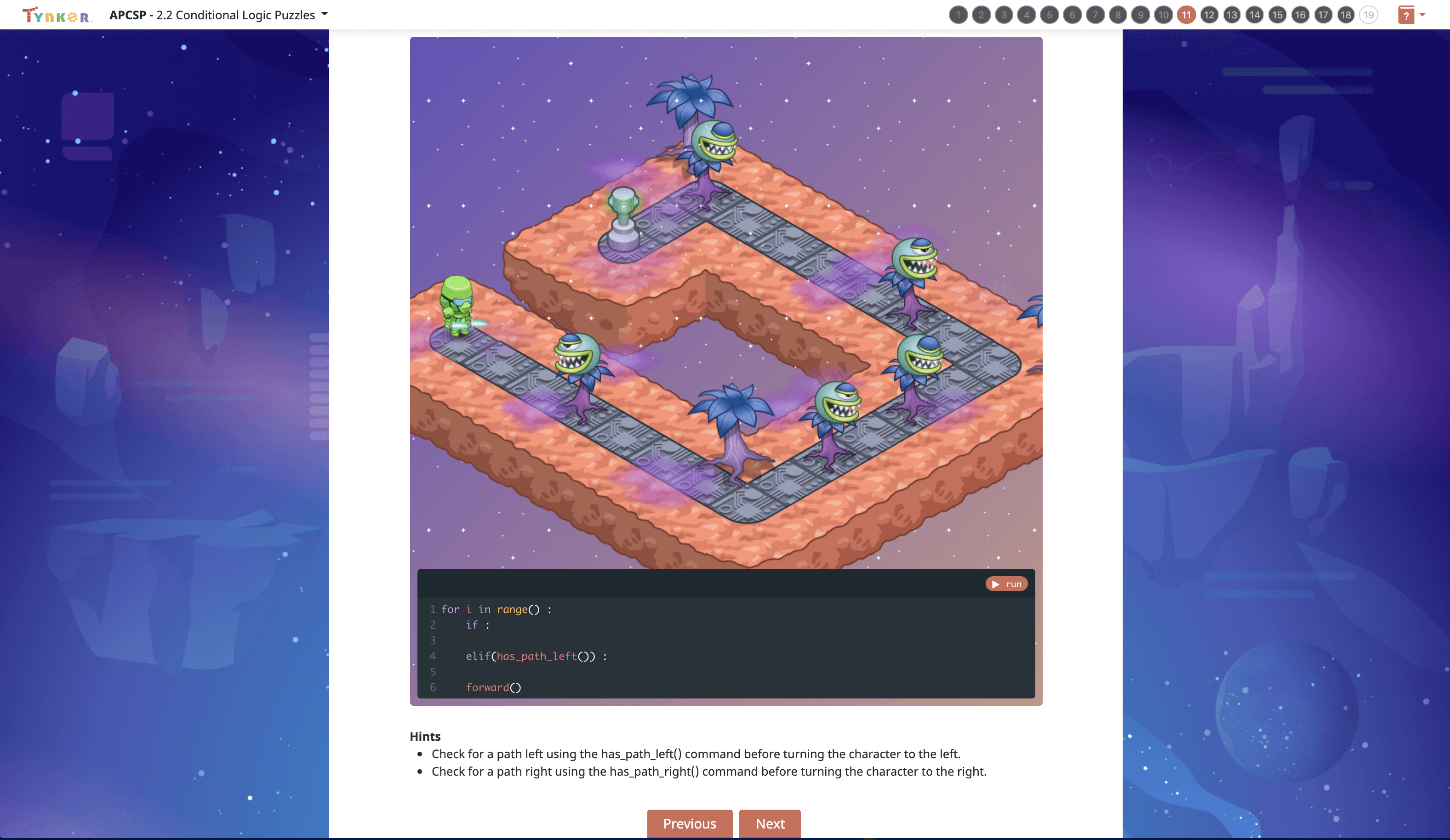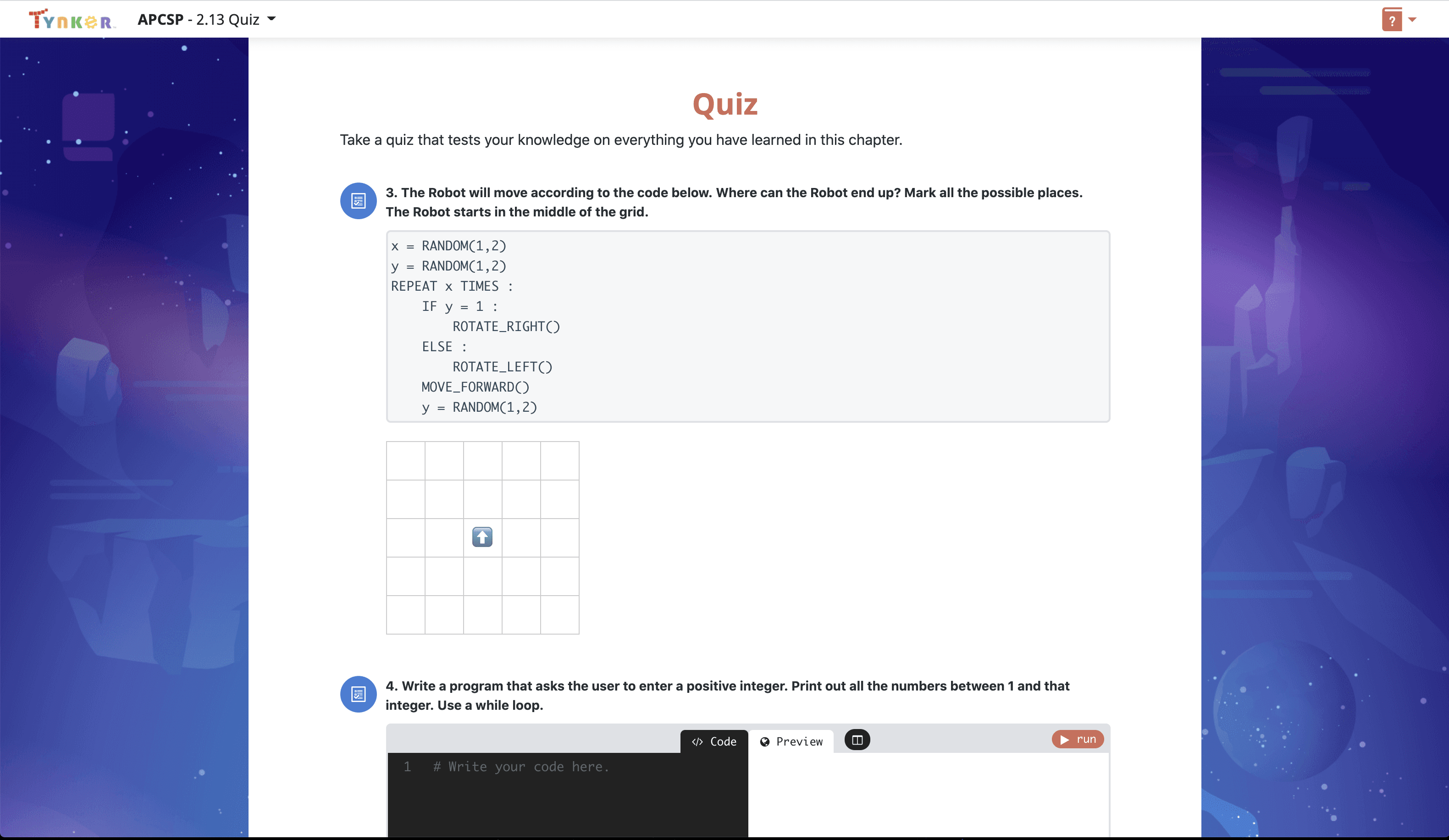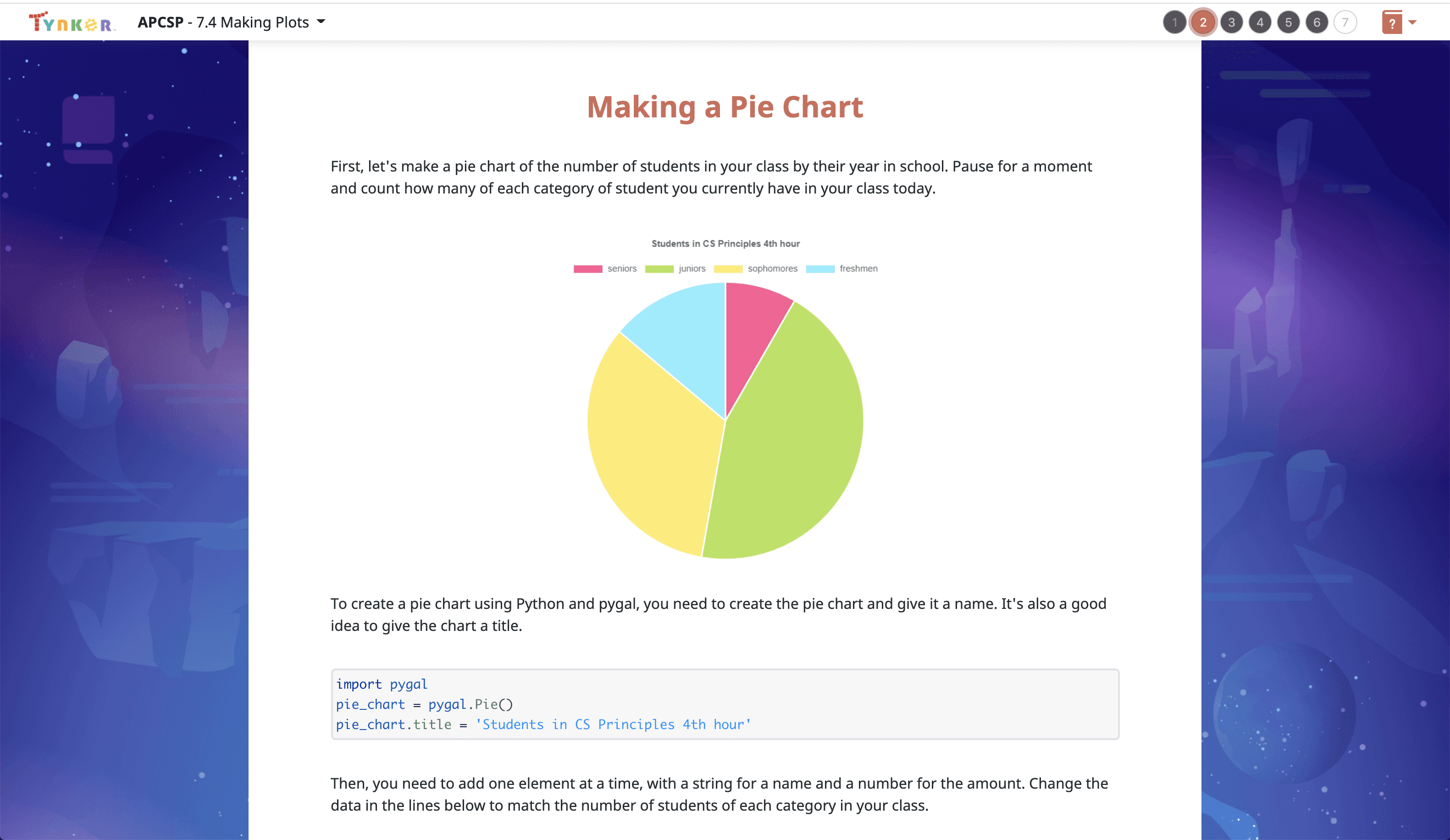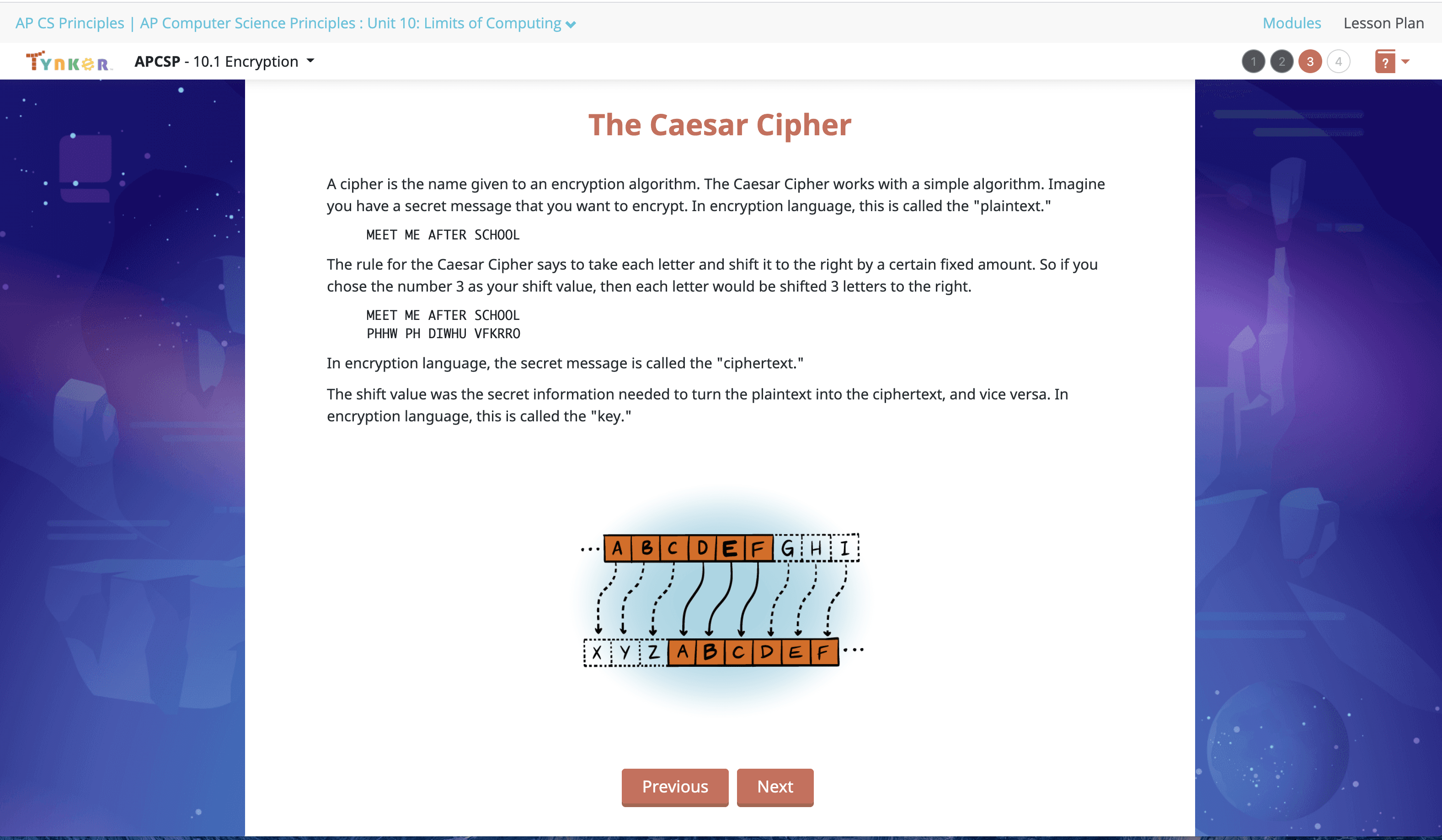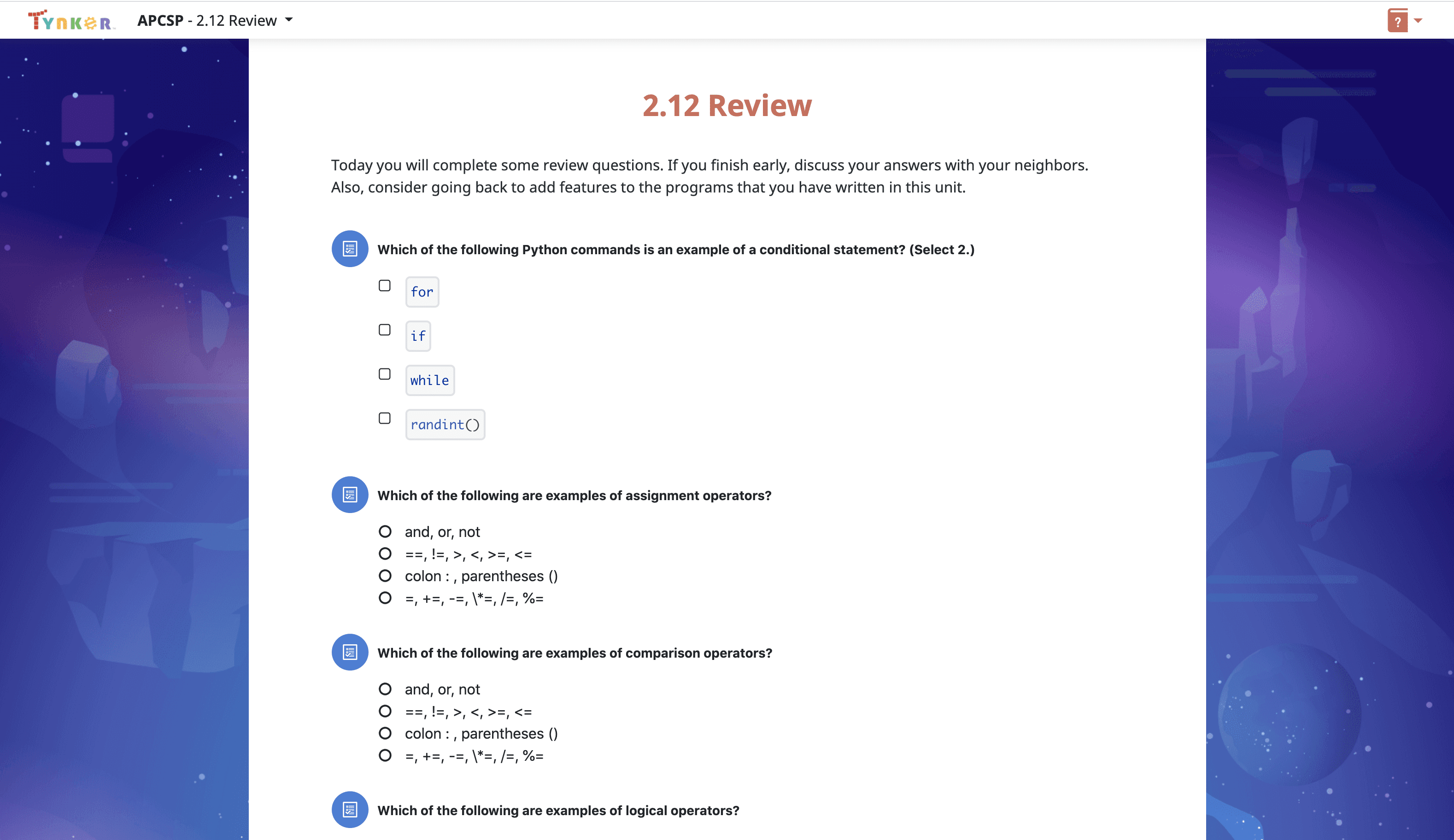true
Answer Key
1a. Name a path from computer F to computer C. **
One possible answer: F, B, E, C
1b. What is the fewest number of connections that would need to be removed in order to prevent information from traveling from E to F? **
Deleting GF and FB will isolate F.
2. Below is a dictionary that represents the hours worked by different students in a given week. **
**
hours_worked = { 'Marcus': 8, 'Amalia': 5, 'Timothy': 5, 'Gina': 7 }Assume there are several more key/value pairs in the dictionary. Write code that would iterate through the dictionary and sum up all the hours. Print out the sum of the hours worked.
total_hours = 0 for number in hours_worked.values(): total_hours = total_hours + number print(total_hours)
3. Explain the process of dynamic packet routing on the Internet. **
Answers may vary; refer to lessons 4.3 and 4.4. Answers should include the following:
Packets move from one router to another to get to their destination.
Packets do not necessarily all follow the same route.
The process has built in redundancy so that if one path is not working, other paths exist.
4. State one difference between parallel computing and distributed computing. **
Answers may vary. Possible answers include:
Parallel computing may involve only one computer, with many processors.
Distributed computing typically involves multiple computers in different locations.
5. Compute the speedup ratio if the following processes were executed using parallel processing. **
| GROUP | FIRST | SECOND | THIRD | FOURTH |
| PROCESS | A | B | C | D |
| milliseconds | 1 | 4 | 2 | 3 |
Sequential: Add up all the numbers: 1 + 4 + 2 + 3 + 3 + 3 + 2 + 2 = 20 milliseconds
Parallel: Add up the largest value in each group: 1 + 4 + 3 + 2 = 10 milliseconds
The speedup ratio is therefore 20 / 10 = 2.
6. Write Python code which creates a loop that continually updates. In the loop, check to see if the user presses the 'D' key. When this happens, move the turtle forward 10 steps. **
Answers will vary. Example code is included here:
# create a turtle import turtle t = turtle.Turtle() # create a screen screen = turtle.Screen() # write the callback function to handle the key press def move_forward(): forward(10) #write the update function to register the keypress handler def update(): screen.onkey(move_forward, 'D') screen.ontimer(update, 100) #turn on the listener screen.listen() #call update update()
Standards
No standards for this section.
Unit 1: Computing Innovations
Welcome to the course! Learn about computing inventions and start coding.
Description
A year-long high school curriculum designed to introduce students to the central ideas of computer science and prepare them for the AP CS Principles Exam.
This curriculum aligns with the College Board’s new 2020 Computer Science Principles framework covering Creative Development, Data, Computing Systems and Networks, Algorithms and Programming, Computing's Impact on Society.
This introductory curriculum is designed for first-time computer science students with no prior coding experience and has no prerequisites beyond Algebra I.
Tynker is recognized by the College Board as an endorsed provider of curriculum and professional development for AP® Computer Science Principles (AP CSP). Using an Endorsed Provider affords schools access to resources including an AP CSP syllabus pre-approved by the College Board’s AP Course Audit, and officially recognized professional development that prepares teachers to teach AP CSP. This endorsement affirms only that components of Tynker’s offerings are aligned to all the AP Curriculum Framework standards and the AP CSP assessment.
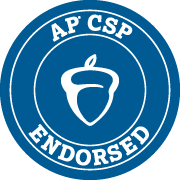
The curriculum introduces general programming concepts using Python, the most popular programming in introductory CS college courses. Students get a crash course in practical programming concepts, like creating procedures, using variables, and control flow.
Students must complete coding challenges from domains like finance, biotechnology, and environmental studies. The curriculum also teaches programming concepts and algorithms using Python, and then maps this knowledge to pseudocode that’s required for the AP CS Principles exam, as per specification on page 205 of the College Board AP CSP exam description.
In AP Computer Science Principles, students will explore the following big ideas in computer science while gaining foundational computational thinking skills:
- Understand the software development life cycle from identifying a problem to collaboration, design, implementation, and iterative improvement of a computing solution.
- Learn how computers represent data and "make decisions" — learn how to analyze and visualize data using charting and plotting techniques.
- Learn how to design and use algorithms—and how their efficiency impacts the execution of a program.
- Understand foundational computing concepts: how the Internet works, and learn more about advanced topics like fault tolerance, artificial intelligence, distributed systems, and parallel processing.
- Explore the impact of computing on society; including ethical and legal concerns, privacy, the digital divide, crowdsourcing, and other side effects.
- Prepare for both the Create performance task section and multiple-choice Exam.
Topics
- Python syntax
- Conditional logic
- Nested loops
- Automation
- Functions
- Simple loops
- Conditional loops
- Expressions
- Operators
- Data types
- Variables
- Turtle graphics
- Artificial Intelligence
- Lists
- Dictionaries
- Objects
- Recursion
What Students Learn
- Big Idea 1. Creative Development
- Big Idea 2. Data
- Big Idea 3. Algorithms and Programming
- Big Idea 4. Computing Systems and Networks
- Big Idea 5. Impact of Computing
Technical Requirements
* Online courses require a modern desktop computer, laptop computer, Chromebook, or Netbook with Internet access and a Chrome (29+), Firefox (30+), Safari (7+), or Edge (20+) browser. No downloads required.
